| Argyroupoli is situated about
20 km south west of Rethymno on the slope of the Azonas rock down
towards the Mouselas valley. |
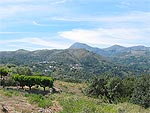
|
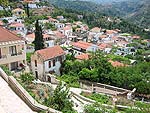 |
Owing to the difference between
the heights of the country the village was built on several levels with
an upper and a lower village. |
| 50 m further down the slope
lies the area with the ten springs called Agia Dynami (The holy Force). |
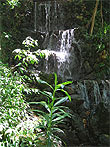
|
|
|
| Argyroupoli is a very old
village, originally called Lappa or Lambi. According to tradition it was
founded at the achaiic invasion about 1400 B.C. which simultaneously
represented the end of the Minoan era.
|
| Lappa was an important town,
mentioned several times in history for example in 220 A.D. when the town
received refugees from Lyktos (east of Iraklion) after Knossos had
destroyed their town.
|
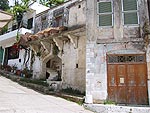
|
| The Roman officer Octavius
occupied the town in 68 B.C. but his opponent Metellus who later
captured all of Crete, took him by surprise making a lightning attack,
killing all his soldiers and destroying the town.
|
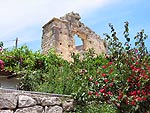 |
Lappa was mentioned again in 31
B.C. during the civil war between Octavian - the later emperor Augustus
- and Marcus Antonius. The town supported Octavian and after his victory
at Actium he favoured the inhabitants of Lappa and erected new luxurious
buildings. |
| Lappa was a prosperous town
during the entire Roman period which appears from the finds and ruins
from this period. The town was for example entitled to coin its own
money. |
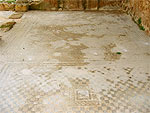
|
|
|
|
|
|
| Even though the town was far
away from the sea it had an extensive trade with its two sea ports:
Ydramia (at the present Dramia) on the north coast and Foinix (the
present Loutro) on the south coast. So in addition to being a rich
commercial town it also had very large territories to its disposal.
|
| During the first Byzantine
period the town was the Episcopal residence - instituted by Titus the
Apostle, Crete's first bishop and patron saint. It kept this position
until the Arab capture in 824 where the town was destroyed again. |
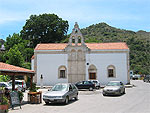
|
|
After the Byzantine Empire's
recapture of the island in 961 the Episcopal residence was transferred
to the nearby town of Episkopi, but the name of the old Episcopal
residence is still alive in the modern bishopric over Lambi, Syvritos
and Sfakia with Episcopal residence in Spili. |
The
Agios Ioannis church
in the square
|
|
|
|
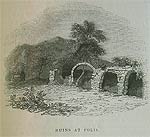 |
Nearly a hundred years after
the recapture of Crete by Nikiforos Fokas, the Byzantine state sent
"the 12 sons of princes" to the island to strengthen its
power. Lappa was handed over to the Chortatsis family who commanded the
town until their unsuccessful rebellion against the Venetians in 1278
where the town was given to Alexios Kallergis as a reward for his
measures to combat the uprising.
|
From
Robert Pashleys' book
Travels in Crete, 1834 |
|
|
|
| During the second Byzantine
period and up throughout the Venetian period the town was merely called
Poli (Town) which demonstrates that it still was an important city.
|
| It was not until 1822 that the
town got the name Argyroupoli after having been called Gaidouropoli (Donkey
town) or Samaropoli (Saddle town) during most of the Turkish period. The
word Argyroupoli means Silver town and refers to an antique silver mine
south east of the town. |
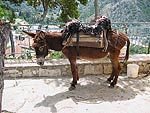
|
|
|
|
|
|
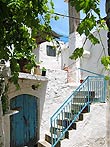 |
Nowadays Argyroupoli is a
picturesque village and a fascinating experience of architecture as many
of the houses are partially constructed from remains of buildings from
the antique Lappa, and there are furthermore a great deal of old ruins
from both the Roman and the Venetian periods. |
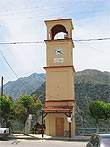
|
|
|
|
|
|
|
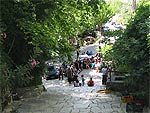 |
In order to get to the ten
springs which are a popular destination for excursions, you must turn
aside towards Asi Gonia before Argyroupoli. The waters constantly
gushing out of the mountain are impressive (20.000 m3 every
day) and that is why there used to be quite a few water mills in this
place. |
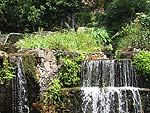
|
|
|
|
|
|
| The water mills have now been
closed down, and there are a number of restaurants instead where you can
sit between the many gurgling, splashing, and roaring cascades, the
water of which forms part of Rethymno's water supply. |
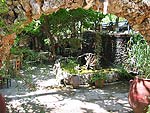
|
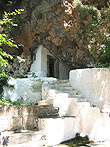 |
Steps covered with tiles lead
from the road up to a cave with a small Agios Ioannis chapel in which
half of the floor is under water. |
|
|
|
|
|